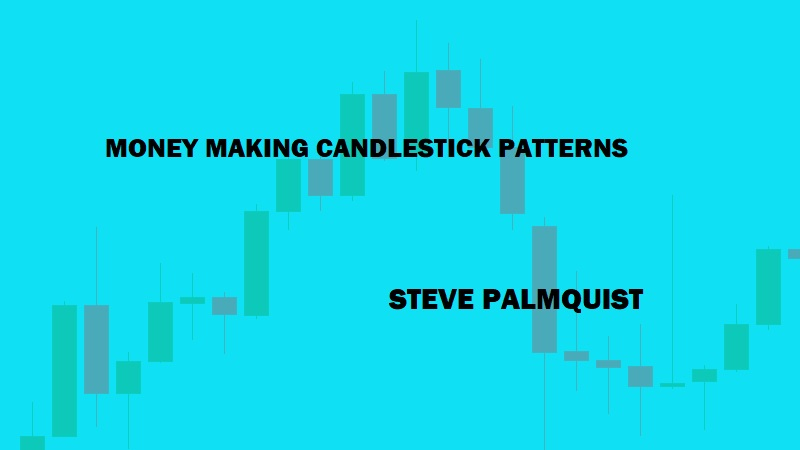Testing a Longer Time Frame
Issue of statistical relevance, Testing a timeframe, Body color in timeframe, parameters in third day
Course: [ MONEY MAKING CANDLESTICK PATTERNS : Chapter 6: Morning Star Patterns ]

An interesting issue raised by these test results is how to deal with trading patterns that end in a low number of trades during the test period.
TESTING A LONGER TIME FRAME
At
this point you may be thinking that we should test this version of the morning
star pattern in a very long time frame. Testing this during the 7 A-year period
from the end of 1999 to May of 2007 showed an annualized ROI of negative 25%,
and the winning percentage dropped to 42%. What happened? Does the system just
fail in longer time frames?
The
answer, like many things in trading, comes by looking at the market. Figure 6.11 shows the NASDAQ during the December
1999 to May 2007 test period. During 2000, 2001, and 2002, the market dropped
around 80%. As I recall during the first part of that period, the talking heads
on the financial shows were encouraging people to “stay
the course,” “believe in America,” and worst of all, “buy the dips.” This illustrates how important it
is to learn how to read the charts yourself because anyone who knew how to draw
trend lines was either out or short in 2000.
FIGURE 6.11: NASDAQ MARKET BETWEEN DEC. 1999
AND MAY 2007

The
period between 03/31/00 and 10/04/02 was one of the worst bear markets in
history, with the NASDAQ declining from the 5,000 area to the 1,100 area.
Testing the morning star pattern during this period (with the requirement that
the second day’s high be below the first day’s low) showed 130 trades and an
annualized loss of 111%. Only 32% of the trades were profitable. This pattern,
and many other long systems, was not able to overcome the strong bearish tendencies
of the market during this unique period.
From
10/24/02 to 05/01/07, the market showed a number of normal up and down cycles,
but nothing as dramatic as the 2000 to 2002 period. Between 10/24/02 and
05/01/07, this modified morning star pattern showed 142 trades, a little less
than three a month, and an annualized ROI of 46%. Winning trades returned an
average of 5.3% and losing trades lost an average of 3.6%.
The
key point here is to show that market conditions have a strong effect on most
trading patterns, and it is important for traders to understand how their
patterns perform in different market conditions. It is also important to
understand that testing in a longer time frame does not necessarily produce
more reliable results. Some traders feel that if a two-year test is good, a
five-year test must be more accurate, and an eight-year test would be even
better for accurately representing how a pattern performs. Sometimes this is
not the case because unusual market conditions can overpower the results.
As
we have seen here, increasing the test period length from two to five years
might lead one to believe the trading pattern is solid. Another trader who only
tested the pattern in the eight year period from 2000 to 2007 would see
negative results and conclude the pattern is not worth trading. The difference
is that the eight-year period includes one of the worst bear markets in
history. What are the odds of the market showing another eight-year period like
that in the near future? Not likely. This is why just arbitrarily increasing
the test period does not ensure more accurate results when testing trading
patterns. Traders can get a better idea of how a system performs by testing in
multiple instances of all three basic market conditions.
The Issue of Statistical Relevance
An
interesting issue raised by these test results is how to deal with trading
patterns that end in a low number of trades during the test period. The heart
of this issue is whether the test results are statistically significant. In this
case, we saw similar results in two different testing periods, which indicated
the filter may not be curve fitting the data in one time frame. However, we
should be on our guard when we see a small number of trades during a long test
period. It raises some questions as to how likely the results are to be
replicated in the future.
A
more practical question is that trading less than three patterns a month may
not provide enough opportunity for profit. Making a trade every couple of weeks
and annualizing the results can give a good annualized ROI, but total dollars
flowing into the trader’s account may not be as strong as a pattern with a
lower annualized ROI and more consistent trades. Typically, I want to see
trading patterns that provide multiple opportunities every week. Because of
this issue, I will go back to the requirement of the second day’s close being
below the first day’s low. The results of using this requirement are shown in Figure 6.9.
DOES BODY COLOR MATTER?
In
the process of making the morning star pattern more specific, we have analyzed
the effects of changing the parameters of body size and of a gap down on the
second day. The last aspect of the second day of the pattern is the assertion
that the body color does not matter. Let’s test that assertion.
The
data in Figure 6.12 indicates that during
the 01/03/06 to 05/01/07 test period, trading morning star patterns with black
bodies on the second day improved both the annualized ROI and the percentage of
winning trades as compared to the results of Figure
6.9, which allowed second day black bodies of either color. An example
morning star pattern with a black body on the second day of the pattern is
shown in Figure 6.13.
FIGURE 6.12: TEST RESULTS FOR MORNING STARS
WITH SECOND DAY BLACK BODIES

FIGURE 6.13: MORNING STAR WITH SECOND DAY
BLACK BODY

Testing
the requirement of the second day black body in the longer time frame of
01/02/04 to 05/01/07 resulted in a 29% annualized ROI (10% for buy and hold)
and a winning percentage of nearly 55% percent. This is an improvement over the
20% annualized ROI and 54% winning trades that resulted during the same period
when taking trades of either body color on the second day of the pattern.
During
these two test periods, the results favor taking morning star trades with black
bodies on the second day of the pattern. I also tested the effect of only
taking trades during the 01/02/04 to 05/01/07 test period with white bodies on
the second day. The test results shown in Figure 6.14 indicate that taking
morning star trades with white second day bodies during the 01/02/04 to
05/01/07 period results in a small annualized ROI loss. Testing the second day
black bodies in multiple time frames showed an improvement in results, and
testing second day white bodies showed a decrease in results. Based on these
results, I will incorporate the requirement for a second day black body into
the morning star definition.
FIGURE 6.14: TEST RESULTS FOR MORNING STARS
WITH SECOND DAY WHITE BODIES

THIRD DAY PARAMETERS
The
requirements for the third day of the morning star pattern are relatively
simple. It must be a white body and it must close within the top half of the
range of the first day of the pattern. I tested different requirements for how
far into the first day’s range the last day must close and did not find
anything that significantly helped the results.
Gaps
may indicate strength, so I tested a requirement that the last day of the pattern
gap up. During the 01/03/06 to 05/10/ 07 test period, this new requirement
resulted in a slight decrease in the annualized ROI and the percentage of
winning trades. Therefore, a gap up on the third day of the pattern does not
appear to be something worth incorporating into the morning star definition.
I
also found that during this test period, requiring the third day of the pattern
to have the largest range of the last five days did not help results. This
requirement was found to be useful in other patterns, but does not help the
morning star pattern.
MONEY MAKING CANDLESTICK PATTERNS : Chapter 6: Morning Star Patterns : Tag: Candlestick Pattern Trading, Forex : Issue of statistical relevance, Testing a timeframe, Body color in timeframe, parameters in third day - Testing a Longer Time Frame





